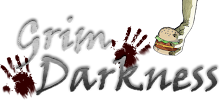----------------------------------------------------------------------------
Article: 'Rapid prototyping a virtual fire drill environment using computer game technology.'
Author: Smith, S.P.
Journal: Fire safety journal
ISSN: 0379-7112
Date: 2009
http://tinyurl.com/ag2aqs
http://tinyurl.com/b698dd
----------------------------------------------------------------------------
“The Source Engine was developed by the Valve Corporation and is most notably used in games such as Half-Life2 and Counter-Strike: Source. The Source Engine features a high degree of modularity and flexibility, lip synchronisation and facial expression technology and a realistic physics system. The engine also supports particle effects, volumetric smoke and environmental effects such as fog and rain. An advanced artificial intelligence system is provided which enables sophisticated character navigation, enabling characters to run, jump, climb stairs, etc.
The level editor that is used to produce levels for games using the Source Engine is the Valve Hammer Editor, commonly referred to as Hammer. All the necessary tools for creating a mod and game content, e.g. via Hammer, are included with the Source SDK, which is available after purchasing a Source-based game, e.g. Half-Life 2, and can be downloaded using Valve's digital content delivery service called Steam. Documentation for the Source SDK is provided on the Valve Developer Community wiki, which was created by Valve and is the definitive and most comprehensive source of information on using the Source Engine.”
- A justification of why we have chosen to use the Valve 'Hammer Editor' to prototype our product also. The Valve Editor is the most easy to use level development program currently accessible to students and is very flexible.
----------------------------------------------------------------------------
“The building chosen to be modelled was the Computer Science Department at Durham University. The department building consists of three floors with a number of offices, meeting rooms and a reception on the first floor. Three exits were identified: the main entrance on the ground floor, a rear exit on the first floor and a connecting corridor between Computer Science and the Engineering Department on the second floor.
Floor plans of all three floors of the department were used to determine the layout and relative scale of corridors, doors and rooms. Elements in the real building that would act as audio and visual cues to someone during a fire evacuation were identified in the department and their positions added to the plans so that they could be accurately included in the final model. These included fire alarm triggers, fire alarm sirens, fire exit signs and fire extinguishers. Photographs of various areas of the department were taken to aid texturing the 3D model.”
- This extract of the article helps with texturing and building up the model of our building for the fire simulation. Taking pictures of the real life locations helps with texturing objects with the photograph being used as a reference.
----------------------------------------------------------------------------
“One of the main features required of the game engine was support for fire and smoke effects. Using the Source Engine and Hammer, this was accomplished by using fire entities, which are objects that generate fire at their origin and smoke effects above the flame. The smoke can be toggled on/off, the height of the flame can be specified and fires can be set to have an infinite duration, i.e. fires that will burn forever.
The spread of fire through the virtual environment is an important part of fire drill simulations. This was achieved by placing several fire entities in close proximity to each other and only igniting the fire entities at the fire start point. Although this did not produce a completely accurate representation of how a fire might spread in a real building, it was a useful method for quickly producing a fire that spreads over time.”


